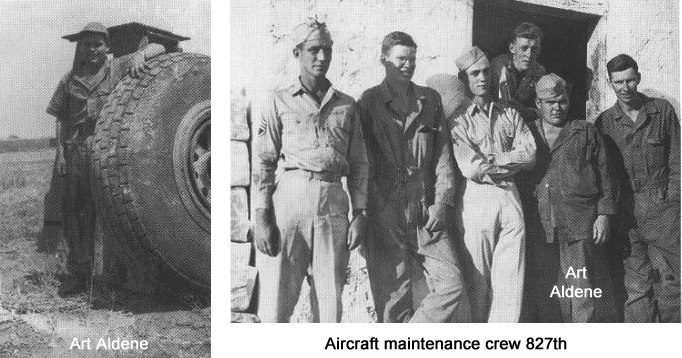Memories of B-24 crews on the first and most significant airlift of WW2 with bomber airplanes.
Here the stories of young men on their way to Lyon, between September 10 and September 22, in support of the Tactical Air Force employed by Patton's 3rd Army. Patton led 3rd Army was chewing up big chunks of German opposition by using P-47s and P-51s to hit at strong points, tanks and guns. In doing so hits tactical fighter-bombers were running out of supplies.
With most of the bridges destroyed and the road covered by bomb craters and cars/tanks wrecks, from Marseille to Lyon, the 451st, 461st and 484th Bomb Group was asked to ferry supplies to Lyon Bron.
Intimately linked to the fate of the B-24 Liberator STEW BUM, the airlift to Bron is documented by numerous testimonials from the crew men from Torretta and Cerignola, Italy.
Join them as they fly to Lyon, the City of Lights, 80 years back...
Stanley PERLMAN
Issue 29 Ad-Lib (page 18) :
Testimonial from 'The Stanley PERLMAN overseas journal' (451st Bombardment Group, 726th Bomb Squadron). Stanley is a Maintenance Flight Chief (Technical Sergeant), he is from the ground personnel.
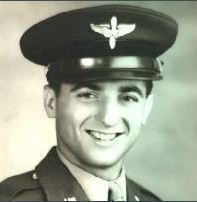

Stanley left the USA from Florida on December 9, 1943 in a B-24 (42-52082 #43 Crew: 37, Nose-art: The A train) for Italy. His route runs through Trinidad, Belem in Brazil, Natal, the ocean crossing to Dakar, Marrakech and Teleghma (Algeria). He remained in Algeria until January 20, 1944, as the runways in Italy had not yet been completed.
9/11/44. Well the boys are making shuttle runs to Lyon, France. At the moment the army has turned us into transports for supplies to troops in France. Because all bridges are blown up and the supply line stretched so far, we're supplying them with gas, oil and bombs, at the fighter field in Lyon. 12 500 lb bombs; 18 empty barrels (the boys fill the barrels up with gas from the Tokyo tanks.)
9/13/44. Taking off again for Lyon. What a load: bombs, barrels, oil and a full crew, plus 2 Majors. But we dropped the ball turret so it makes the ship about 1,700 lbs lighter. Some ships are carrying gas in the bomb bay. They took sleeping bags...might decide to stay there all night.
9/22/44. Friday. Left for Lyon, France on one of our ferrying trips. I went in 'Klunker' Left with 100 Gallons of oil, 18 empty gas drums, 12 x 500 lb bombs, 1,000 rounds of armor piercing ammo and 13 men on the crew. 80,000 lbs of weight. Arrived at 1130. The field is so crowded that we circled for over an hour. A P-47 ran into a B-24, tore the whole wing off. Ships take off and land every second. It's such a beautiful field. The Germans occupied it and had about 30 hangers. There wasn't a one left of them, just the remains. The reason we did ferrying was because the US 6th, 7th Armies moved up to the Belfort Gap so fast that supplies were needed something awful. Our Engineering Officer gave four of us a 2 day pass, so we went into town. Got to town on a street car. I shall try and describe the trip. The street cars are on a one way track. They are red and some are open street cars, like we had in the 1925'6. They have modern buses-electric. Everyone is so friendly. All the people look at you and smile. Was not a bad looking girl in the bunch. They all wear a beautiful hairdo and smell of fragrant perfume.
The town is so clean. The important means of transportation are bicycles. It's nothing like Italy. People are so neat. We arrived in town about 1400. Went to cross the Rhone River. All the bridges were blown up by the Germans. What they did was to blow up the center section of each bridge. drop a span - they did it so neatly. There are about 12 bridges across the Rhone. I took pictures of them, but the day was sorta dark. We found a hotel room off the center of town. Then we had dinner. The way they serve, you're first impression is that you'll starve. They served us tomato salad with pickle juice over it and bread. So we filled up with bread and tomato. Sure were stuffed. Then came our soup, then macaroni, then the meat, all at different times. We sure learned a lesson. Spent the rest of the time at the Cafe and Night Spots.
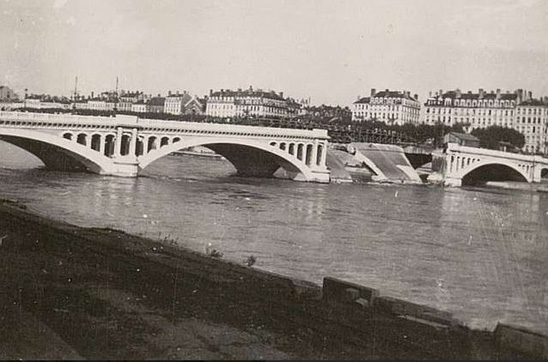

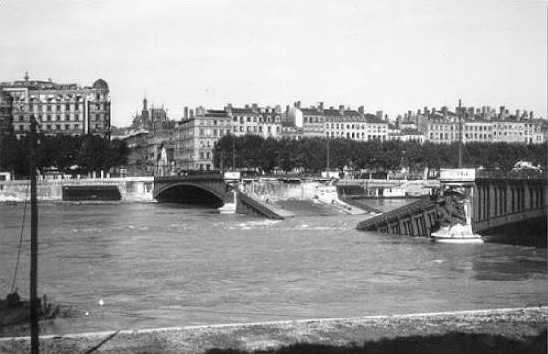

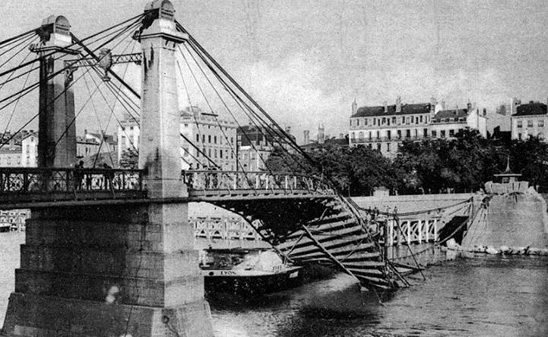

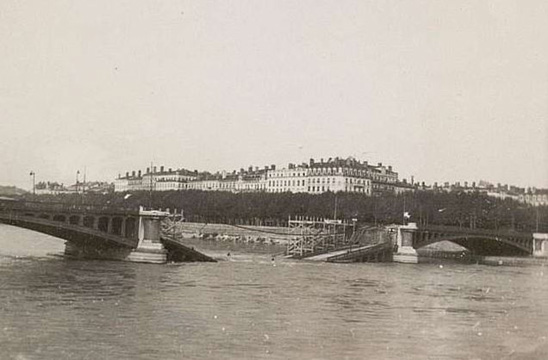

9/23/44. It rained today. Guess we won't be able to return. Walked all around all the stores and cafes. Bought a few pictures and stuff. Took some more pictures. Hope they come out. Was able to get hold of some film for 14 francs.
9/24/44. It looked good enough to take off. Went out to the airport. First took a bunch of pictures. A lot of Frenchmen stopped us. It was Sunday morning, 'We're all glad to have you here, the Americans are always welcome'. So we was, and they were, very friendly with us. We met up with one Frenchman who spoke English. He told us about the autocracy committed by the Ger- mans, concerning the treatment of a Jew, or anyone that was circumcised. How they took reprisals on children and (----) them in a church. How they fed salt water to a crowd of 80 in a box car and found nothing alive when they opened the car. How they wanted everything their way. He said it was hell. We went back to the air- field and when we went back we found we were in hot water. Our Group stopped ferrying. We did our next best thing and took the #484 ships and went to Marseilles to sweat out a ride to Rome. Our trip to Marseilles was beautiful. We flew back at 200 feet off the ground and saw all of France on the way down. Stayed at Marseilles over night to get the 'Rome Courier' C-47 tomorrow morning.
9/25/44. Arrived in Rome this morning. All the fields were closed. They had a heavy rain. We aren't able to get a ride home from here, so we started hitch.
B-24 'KLUNKER' (41-28955 for 726th #36).
Listed as MIA on October 13, 1944, she actually had landed at VIS. She was repaired and returned to the group on November 5, 1944. Back to Italy on November 5, lost on November 5, 1944 (MACR#9884 : fuel starvation due to battle damage).
Leslie Edward TOLEEN
From The 461ST LIBERAIDER (page 3, June 1996) : Testimonial of Les Toleen (461st BG, 766th B.S. Armament Section). He talked about an accident that occurred on September 22, 1944.
I was a Staff Sgt. assigned to the 461st B.G., 766th B.S. armament section. Joined the Group at Wendover Field, Utah, went to Hammer Field, California and eventually ended up at Cerignola, Italy, Torretta Field for 19 months.
During that period of time I had a chance to fly on one of the supply missions to deliver gasoline, bombs, etc. to Lyon, France. This is my account of that mission through the eyes of a ground crewman.
The mission was posted on a bulletin board asking for volunteers so I thought I'd sign up to see what it would be like to take an active part in an actual flight.
Early in the morning on the following day after breakfast, I rode out to the flight line and was dropped off at the aircraft with the rest of the crew. I was told that when we reached Lyon my job would be to toggle the unarmed 500 pound bombs onto the ground and help unload the 55 gallon drums of airplane fuel.
We then boarded the aircraft and I joined the crew who were all jammed up front in the cabin of the aircraft. Engines were started up and someone yelled into my ear 'Go down below and shut off the A.P.U. (Auxiliary Power Unit) when we get airborne I'll let you know when'.
By now we were taxing out of the revetment and believe it or not we were loaded so heavy the tail end of the fuselage scraped against the ground. We slowly reached the end of the runway and with brakes applied the pilot revved up the four engines to full throttle and finally, when he got the green light from the control tower, he released the brakes and the aircraft slowly lumbered forward.
As it began to pick up speed I heard a voice cry out: 'We're not going to make it! We're not going to make it!' ... finally I felt the airplane lift off the ground and we were on our way. Once airborne I got the order to shut off the A.P.U. and we were dispersed to the waist section and other parts of the aircraft.
After flying over Sicily we passed over the port of Marseilles, France where hundreds of boats were docked, we then flew to a lower altitude where we passed over green fields and red-tiled farm cottages.
Finally we reached our destination at the Lyon airport where we landed and taxied to deposit our cargo on the ground. After getting the bombs free of the airplane we unloaded the barrels of airplane fuel.
The crew then took off for town while I guarded the aircraft.
What a busy airport: B-24's landing and taxiing by to unload their bombs and gasoline. Fighter aircraft of many varieties also taking off in all directions. Directly in front of me I saw a P-47 Thunderbolt taking off, at the same time I observed a B-24 coming towards our parked aircraft. The pilot of the fighter plane was evidently not aware of the B-24 until too late to avoid a collision. The P-47 struck the #4 engine of the bomber and peeled the engine off the wing.
The Thunderbolt then shot vertically upwards about 500 feet into the sky and then plummeted straight downwards until the nose of the aircraft hit the ground. The pilot freed himself from the cockpit and hopped down onto the ground. No fires, no injuries, no damage except a smoking B-24 taxiing down the runway minus one engine!
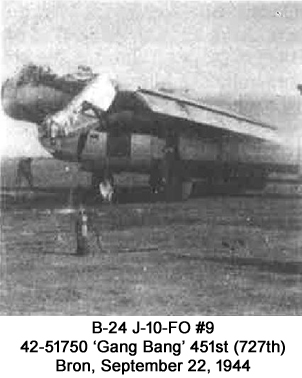

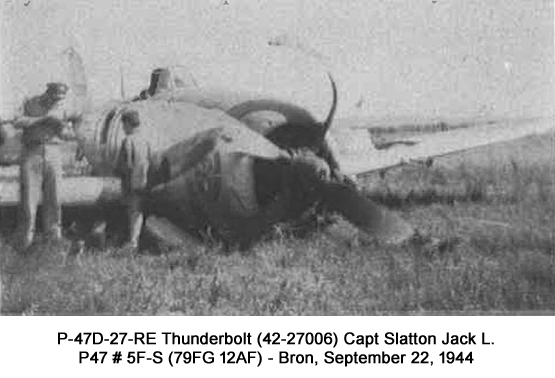

The return trip was uneventful. Clouds obscured our view most of the way back. By and large this day was one I'll forever remember. I can still hear that voice shouting 'We're not going to make it!' ... wish someone would have told him to pipe down.
Bert ABENTS
From The 461ST LIBERAIDER (page 4, June 1996) : Testimonial from Bert Abents (766th B.S.) also on Septembre 22, 1944.
A serious incident occurred while B-24's were landing at the airfield. We had just landed and were getting out of our aircraft when we noticed 3 'Jugs' (P-47's) taking off with a 500 lb. Bomb under their fuselage. A B-24 had just landed and was turning left when for some reason it stopped. The leader of the P-47's tried to clear the left wing of the B-24 but couldn't make it and flew through it. He glanced upward and landed straight ahead in a field, got out of his plane and walked toward us. The wing of the B-24 was completely sheered off and no fire resulted.
A miracle that no one was hurt. A tough bird the P-47!
You mentioned that personnel at Lyon took just enough fuel from the B-24's to enable them to make it back to their base. I believe they wanted a little extra from us as when we neared our runway which was the closest to the coast, we lost an engine through lack of fuel, but we made it OK. Luckily we didn't have to fly any further.
Stanhope E. Elmore Jr.
From The 461ST LIBERAIDER (page 4, June 1996) : Testimonial of Stanhope Elmore, Weather Officer (461st Bomb Group)
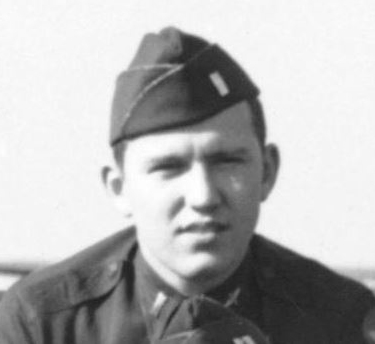

I was a passenger on a mission to Lyon, the only mission I flew on during the nearly 18 months I was with the 461st in Italy (Weather Officers weren't expected to fly missions).
First, a little background to let you know how I became a passenger on a flight to Lyon:
As the Group Weather Officer, I wrote my own forecasts, but at Briefings I was required to use the forecast that 15th Air Force sent me by Teletype. Most of the time the two forecasts were identical, but occasionally they differed, and generally they were correct, but if they were wrong, and the mission was cancelled, I still had the authority to give a weather clearance for flights from Cerignola.
On one of the days during September of 1944, I thought the weather was fine for a Supply Mission to Lyon, but the Weather Officer at the Air Force Headquarters in Bari cancelled the mission. About 30 minutes before my 8 hour shift ended (and my 32 hour off-duty started), I was begged to give a weather clearance for a flight to Lyon, because some important part was needed. I can't recall what was so badly needed, but the request had come from Group Headquarters.
I told the pilot that if it had been left up to me, I wouldn't have cancelled the mission, and I saw no weather problems. I then suggested that they take me along as a passenger, since I was off duty until 1600 the next day. He agreed and immediately we started scheming to spend the night in Lyon.
We made the trip fine, except we bounced thru a weak front, and one of the engines had to be feathered. With these minor problems, we were able to enlist Major Hudson's help in persuading the Wing Colonel in command that it would take until the next day to fix the engine, and I told him that the front would build up in the afternoon and it would be dangerous to fly back to Cerignola that afternoon.
So off to Lyon we went, trading cigarettes for booze, meeting pretty girls and friendly citizens. The next day we flew back, after a delightful stay in Lyon, and I reported back to duty at 1600.
I wish I could remember the names of the pilot and crew, and if any of them remember the trip, I would like to hear from them.
Bernard C. SHARP
From The 461ST LIBERAIDER (page 5, June 1996) : Testimonial of Bernard C. Sharp (461st Bomb Group), probably on September 10, since he talked about a B-24 on fire (B-24 #22, 461BG, 44-41113).
Supply Mission to Bron Airfield, France
As a member of the ground crew working on aircraft #18 (LADY DUZZ), 764th Bomb Squadron, 461st Bomb Group located in Torretta, Italy, I wondered what was going on when a large truck unloaded 18 empty 55 gallon steel drums on the edge of our hardstand, then came the armament group with eight 500 pound bombs and many belts of 50 caliber ammo, actually 3,000 rounds. When we were given orders to remove the ball turret from our aircraft, I knew it was for a supply mission but also a very big one since all the other aircraft were going through the same activities.
The unfused bombs were hung on the bomb racks and the ammo was laid on the catwalk in the bomb bay. Then we fitted the 18 steel drums into the waist area between the opening in the floor where the ball turret had been and the wall of the bomb bay. The fuel tanks were filled to maximum capacity 2,700 gallons. Everything on our aircraft was in working order and it was ready to fly.
Captain Wyllie, the pilot of the Lady Duzz, speaking to the ground crew asked for a volunteer from this group to go on this supply mission to France. Thinking of the adventure and a much needed change of scenery, without hesitation, I said, 'I'll go'.
Awakened very early the next morning, we were taken out to the aircraft to go through all the preflight activities with the ground crew. Capt. Wyllie said I would be flying in the waist alone since it was important to see if the landing gear and flaps were retracted properly after take off.
It was a perfect morning for flying, visibility was clear and unlimited. We flew directly over Rome and headed for Corsica. Our flight distance was about 625 miles and should have taken about 4 to 4 1/2 hours. We were not flying in formation, traveling alone but I did see another aircraft from our squadron below us when flying over Corsica. After flying 3 hours we turned north following the Rhone river toward the Bron airfield near Lyon. Flying at an altitude of 1,500 to 2,000 feet, looking down, I saw burned our hulks of German combat vehicles 100 to 200 feet apart. At every turn in the road leading to the bridges over the Rhone river 2 bomb craters blocked the road, and most of the bridges were partially under water. The twelfth Air Force really must have been proud of the job they did.
Suddenly my sightseeing was jolted when Capt. Wyllie's voice in my intercom said, 'Sharp, you better get into the tail turret and keep a look out for German fighters, there could be some around'. Fortunately there were none and I finally got out of the turret as we started our approach to landing at the Bron airfield.
After reporting that the landing gear and flaps were down O.K. I settled onto the floor with my back to a steel drum as we landed. As we taxied to our unloading position, the first two bombers were already there. I noticed the entire airfield except for the runway and taxiways was completely pock-marked with bomb craters.
The airfield was the target of the Fifteenth Air Force bomb groups about a week or so earlier.
As we were unloading the bombs, ammo, drums, and pumping the fuel from our aircraft, we had plenty of help from the ground crews stationed at Bron. The bombs which had been lowered gently from the bomb racks, were rolled onto the grassy area away from the aircraft. Suddenly all this activity stopped as we saw a boiling column of black smoke coming from the first plane in line. Many of the men were running away from the smoking plane. When the plane burst into flames the frenzy started around the plane in front of us.
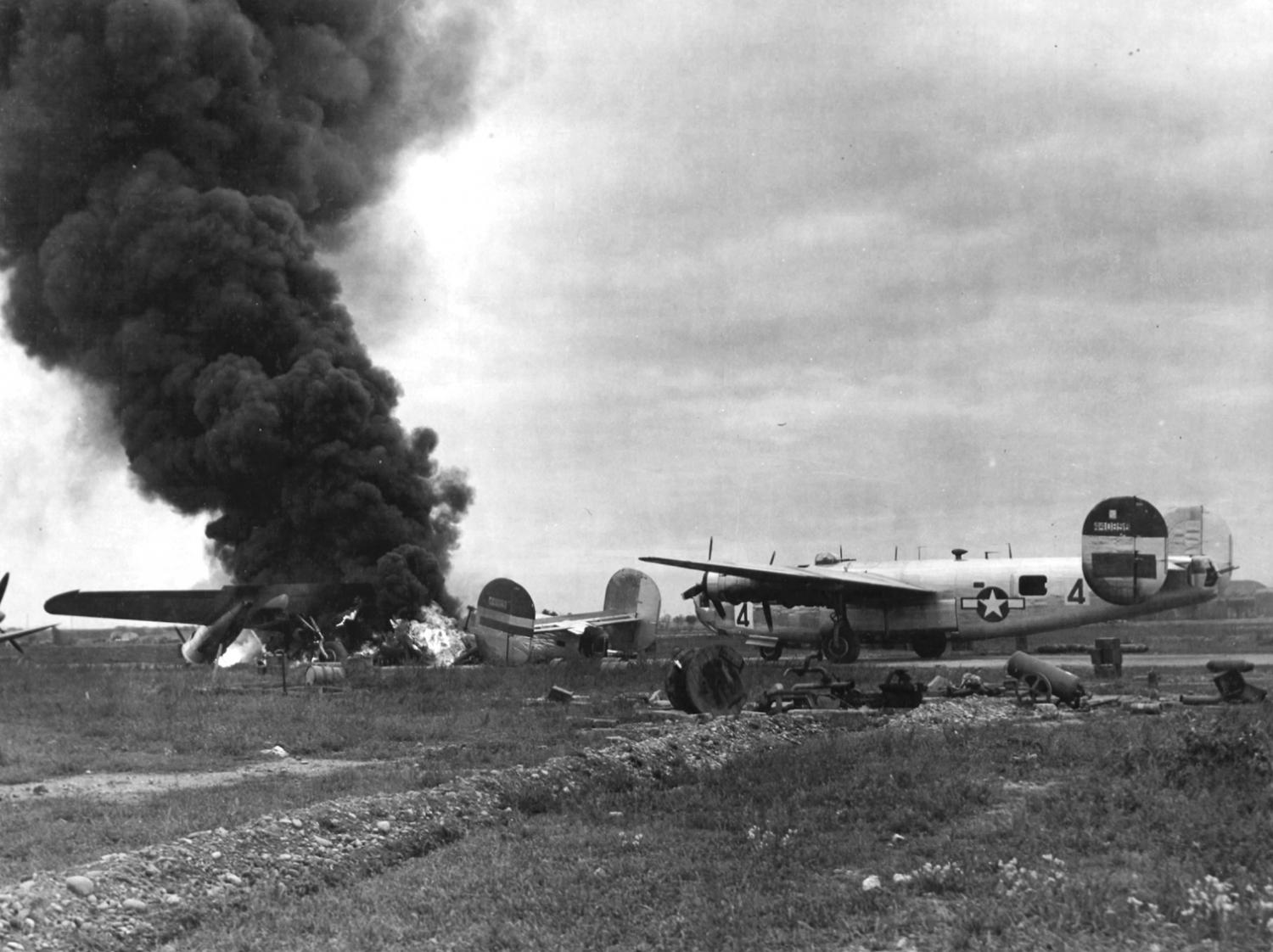

Our plane was about 75 feet behind the second one and although we could feel the heat from the burning plane we finished the unloading. About this time the French people from the area around the airfield were attracted by the smoke and all the bombers landing and came to see what was happening. I estimated at least 2,000 people there. It was hard to believe, but the engines and the propellers of the second plane had completely drooped.
The tubular structure could not support the weight of the engines and props under those hot conditions. At least nobody got hurt.
It was already 4:00 P.M. when Capt. Wyllie said, 'Let's get out of here!' We taxied onto the grass around the misshapened and burning B-24 then back onto the taxiway to the take off position at the end of the runway. The French people had lined up on both sides for the entire length of the runway waving the V-sign and cheering as we raved by on the take off run. If the French people had only known how much danger there was in their enthusiasm.
A few moments after taking off Capt. Wyllie was back on the intercom saying that very little fuel was left in three of our tanks and over 800 gallons was in the right outboard tank. The fuel has to be divided equally: 200 gallons in each tank, enough to get us back to Italy. Also it was very critical that this was done before we get to Marseilles because we don't want to make an emergency landing there if one of our engines runs out of fuel. The Germans are surrounded in a fort there and in our approach to the airport we fly directly over the fort and they shoot at any aircraft overhead.
The B-24 had two placed from which to control the transfer of fuel from tank to tank. One was in the passageway to the nose compartment, the other in the waist above the bomb bay. Immediately after Capt. Wyllie spoke to us, the flight engineer in the front of the plane started transferring fuel and I raced back to the waist and scrambled up to the top of the bomb bay where I could control the transfer of the fuel in the rear wing tanks. All the pumps and valves worked without a hitch, the fuel was evenly divided and we were on our way.
When we arrived at our airfield it was completely dark and I was a little apprehensive about landing since I didn't remember any planes landing there at night. I'm not 100 percent sure but I think I remember large bonfires at each end of the runway and trucks and jeeps with their lights on directed on the runway from either side. Capt. Wyllie was a great pilot and made a fine landing.
Charles T. LOMAX
From The Torretta Flyer n°17 (page 10) : Testimonial of Charles T. LOMAX (461st Bomb Group, 767 squadron), from his diary. He is originated from Magnolia, NJ.
Mission 20: Lyon, France ship #72, September 13, 1944.
The rail road and highway bridges over the Rhone river were destroyed by the Germans and the Allied Armies and Air Forces. It was difficult getting supplies to our armies who had moved up the Rhone River valley in the vicinity of Lyon.
Mission 21: Lyon, France. Ship #60. September 17, 1944.
We lost an engine on our way up to Lyon, the weather was bad, and getting worse as we flew north. We decided that we should land at the first available landing strip, and so informed the crew. We had to be careful as some strips were still being used by the Germans. One of the crew spotted a strip as we hit a break in the clouds. We started to circle and let down to get a better look. When we found it, it turned out to be a P-47 strip on a farm field. We decided to land in a driving rain storm on this short field. This would be extremely tricky even under ideal conditions. When we landed our main wheels locked and we slid the whole length of the runway across a concrete highway into the mud on the other side where we became stuck. We spent the rest of the day digging the plane out. In the afternoon a C-47 with a load of sailors on board slid down the runway just as we did and headed right for us. At the last possible moment he did a controlled ground loop avoiding a nasty wreck. We were in Valence, France for a week.
NDLR: The mission report for the 484th BG states 'Out of the 18 ships which took off, only one was able to land at Lyon/Bron, and unload'. Look at the reported weather too, on the extract for the 451st BG... Overcast at 2000 ft! None of the 18 aircraft of 451st and 451st were able to reach Lyon-Bron that day.
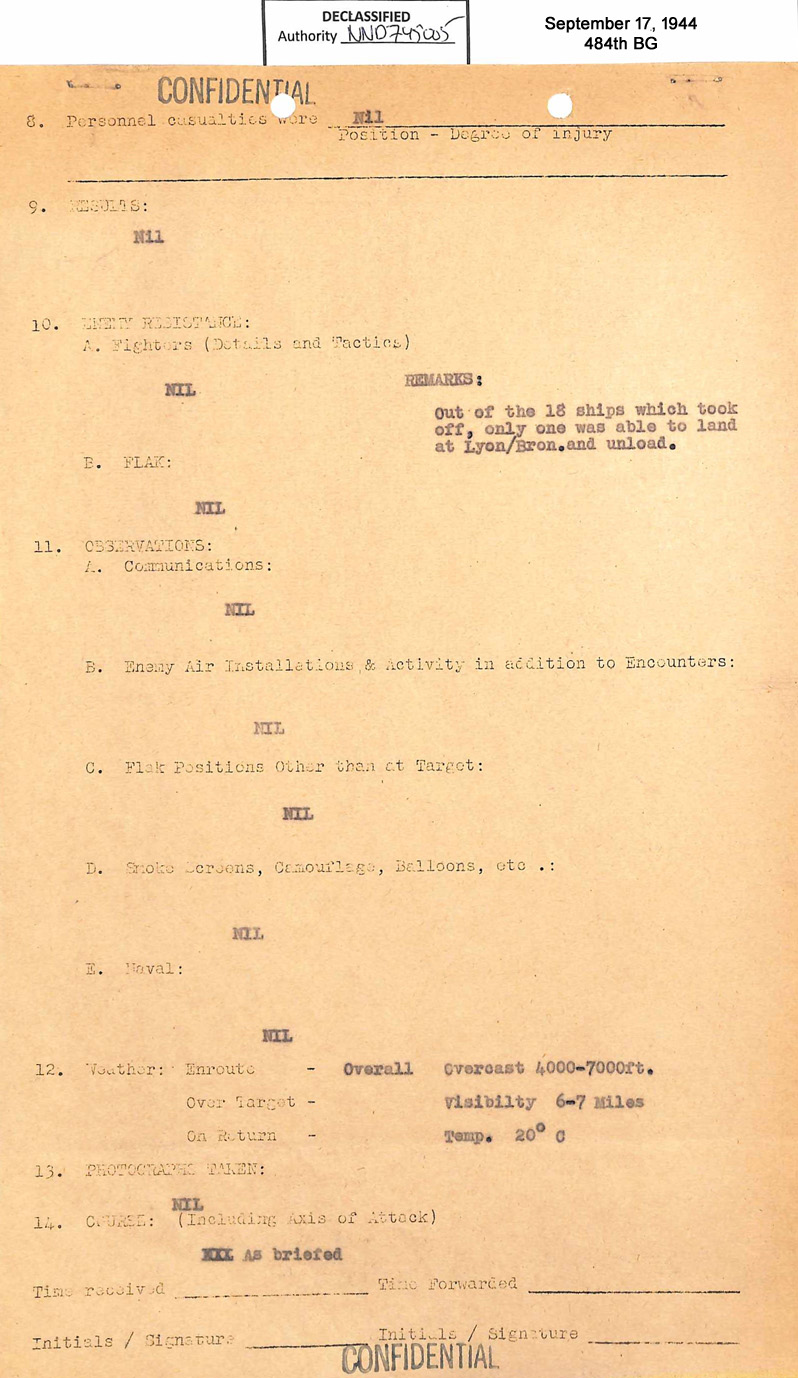

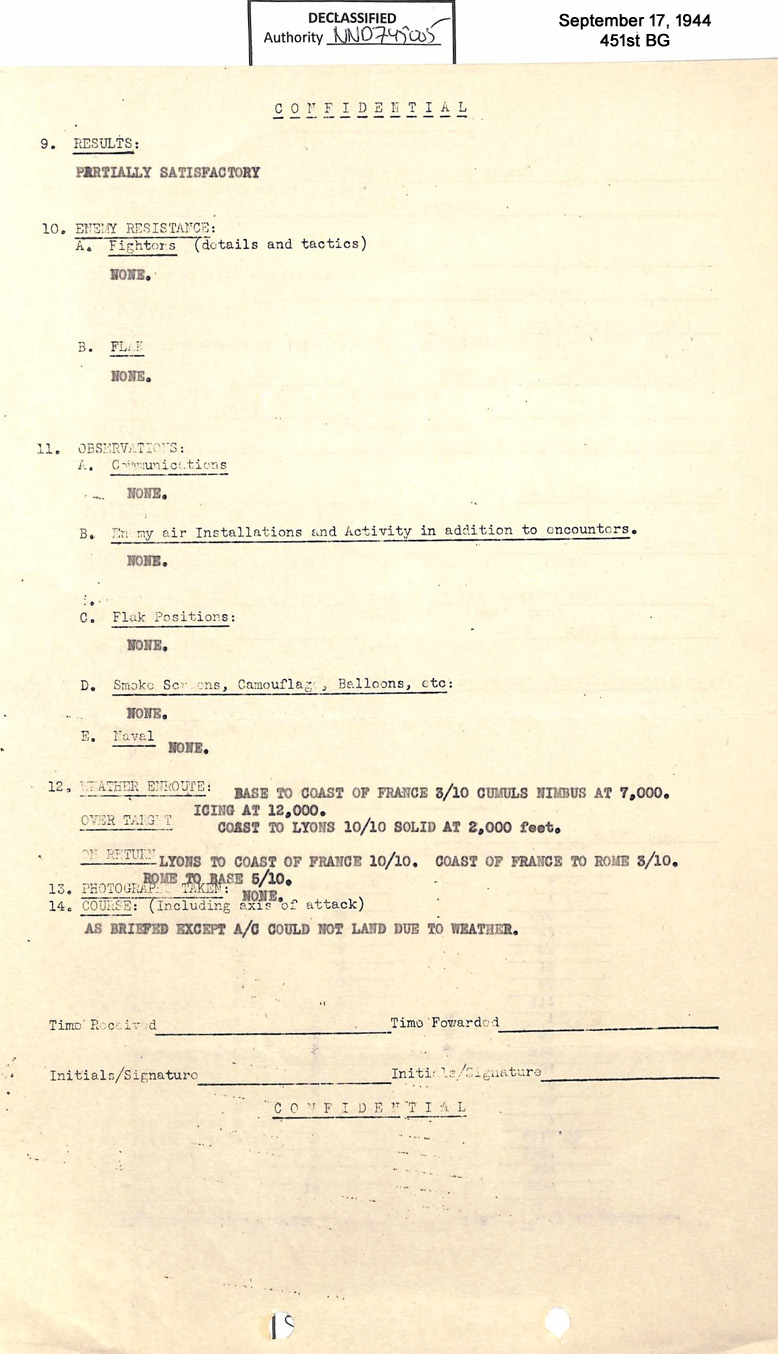

Arthur Delmar ALDENE
From The Torretta Flyer n°34 (page 28) : Testimonial of Art ALDENE.
Born in Moline, Illinois, on August 4, 1922. Art is an Assistant Crew Chief. He is working long hours with the other mechanics to keep the ships of the 827th Squadron flying.
I do not know the date it occurred. The Mission started with the order that all guns are to be removed from all turrets, and the belts of ammunition and cans, or boxes holding them are to be removed also. Then they totally removed the ball turret and placed boards over the hole in floor. They installed fuel cells in the front bomb bay, and in the rear bomb bay on the right hand side they built a wooden floor. On this floor they placed six wooden boxes of fifty caliber ammunition, and six five gallon cans of aircraft engine oil. On the left side they carried 3 five hundred lb. bombs, and in the rear, in the area of the waist guns, they put 15 empty 55 gallon metal drums.
After the planes were loaded, that evening I was told they decided there should be a ground crew member make the trip, since the planes would be landing at a field away from home base, and if some service should be required to get them back to home base, the ground crew member could make the decision as to what would be required.
I was elected to make the trip, so I went to Group Headquarters for briefing. They explained the Allied Army had invaded southern France as a diversionary tactic, but after the invasion of France at Normandy on the sixth of June the German army decided to withdraw to the north to make their stand there. This left the Allied Army advancing faster then the supply lines could keep up. The Air Force had a fighter base at Lyon that needed supples so we would deliver these supplies to them. They were supporting the ground forces in the northern part of France.
First we would not be flying in formation, since there was no reason for a bomb pattern and there was no way to defend each other since there are no defensive guns. This Rhone River valley was known as a flak alley at one time, but it was not challenged recently. The advice was to fly at low altitude as to not attract fighters, and if you were damaged badly the only recourse was to bail out. This was right up Lt. Kenneth Rounds alley, so we flew up the river at an altitude that seemed as though we could look into the upstairs windows of the villas that lined the river.
When we arrived at Lyon, Lt. Rounds put that heavily loaded plane on a concrete paved runway so gently all one could hear was the screech of the tires, but before he could bring it to a stop we came to the end of a short runway. After we helped with the unloading, we decided we could give them another 300 gallons of gas out of our Tokyo tanks. Then we took off to return to Torretta arriving just before dark.
I don't know how many of this type missions were flown, all I can say is my turn didn't come up again. I think the load we carried would support one fighter for one day.
